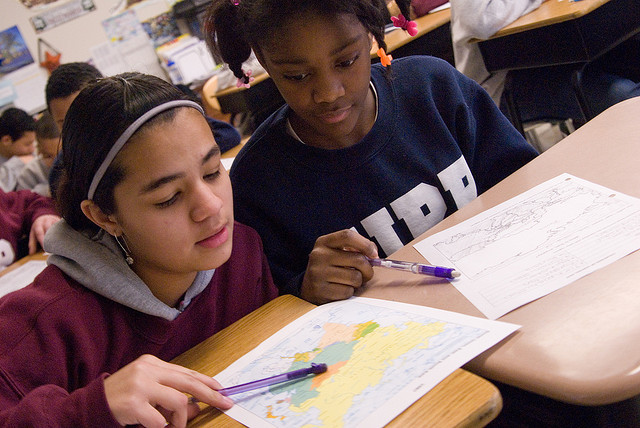The Knowledge is Power Program is a college-preparatory, community-transforming powerhouse. The charter network accounts for 162 schools and 50,000 students across 20 states and consistently and substantially increases achievement among underprivileged students.
Critics of KIPP, however, have attributed high achievement to a student body primed for success from the start and impact data that doesn’t account for attrition rates.
A new and rigorous study proves otherwise. KIPP, in fact, produces excellent results with the same or lower-performing students as traditional public schools and similar attrition rates.
The largest-scale study of KIPP found the schools’ cumulative impact on students accounts for nearly eight to eleven months of additional learning. And 80 percent of those students are from low-income families.
Refutes Opponents’ Claims
Commissioned by KIPP , Mathematica Policy Research, Inc. tackled the topic of attrition in KIPP schools as critics claimed the schools’ high achievement was due to an above-average entering student body with markedly low attrition rates. This raised the question of whether the KIPP model is replicable with varying student bodies.
“We had heard the concern raised before, so we wanted to know to what extent there was empirical evidence supporting it or not,” said study coauthor Brian Gill. “It’s potentially relevant to how generalizeable KIPP’s strategies and impact might be.”
The study’s authors found KIPP students are more likely to be black, Hispanic, and low-income than their peers in district schools. The achievement of KIPP students in fourth grade, prior to entering KIPP, is lower, on average, than average district scores.
According to the report, the researchers found no “consistent pattern of differences in attrition rates between KIPP and district schools.” There is no evidence low-achieving kids are being pushed out, Gill said.
“KIPP is producing those positive impacts with kids who are not advantaged in any measurable dimension when they arrive at KIPP,” Gill said. “They are overwhelming low income, low achieving, and comparable to other kids in their neighborhood schools.”
Emphasis on Character Development
KIPP addresses academics and character with a “laser-like focus,” said Steve Mancini, KIPP director of public affairs.
“We are very selective in how we choose teachers and then train for a year through the Fisher training program,” Mancini said. “We build [each school] from the ground up.”
Though the KIPP model drives success, the program decentralizes authority to ensure control is local.
“We allow local boards to hire leadership, and ultimately the principals have the power to lead,” Mancini said.
KIPP has focused on transparency; commissioning gold-standard studies, and providing the public with regular reviews of its schools, Mancini said.
“The results definitely reflected what we understood about our schools, but it was helpful to have somebody else come to that conclusion with objective evidence [proving] that this was a trend across all of our schools,” Mancini said. “We knew that we were getting kids coming in lower academically.… We knew it was a misconception that we were getting kids who were more able. Mathematica gave us a comparison to the reality in the schools in the district that we served.”
‘Teach for America’ Connection
Mancini credits Teach for America corps members for bolstering KIPP’s success.
“Half of our principals are alumni, and thirty percent of our teachers are either corps members or alumni inside of KIPP,” Mancini said. “People often forget that connection. They are our founders. [Without TFA] we couldn’t have achieved the success that we have reached to date.”
“It’s hard for me to read how much impact this one study will have, but it’s clear in Illinois, outside of Chicago we have very small representation of charter schools,” said Ted Dabrowski of the Illinois Policy Institute. “I think that’s indicative of the problems of not giving families more choice and more alternatives.
He added, “[The KIPP] model is very different from the traditional public school model as a system. High expectations, ability to innovate, [and] empower[ing] teachers and principals are lessons that could be learned from traditional schools, but those lessons will only be learned if you allow more charters and options to blossom. These schools are free to do different things, and we need that.”
Ashley Bateman ([email protected]) writes from Alexandria, Virginia.
Image by Nancy Sarles.




